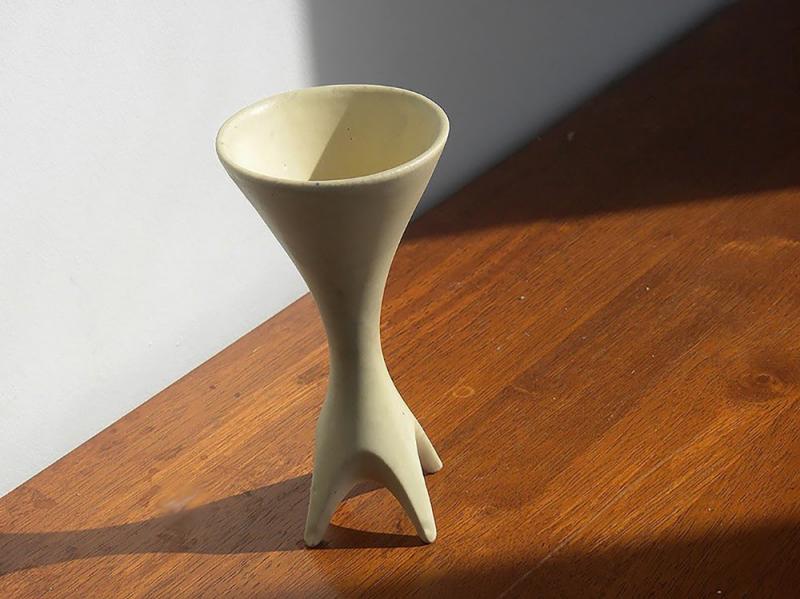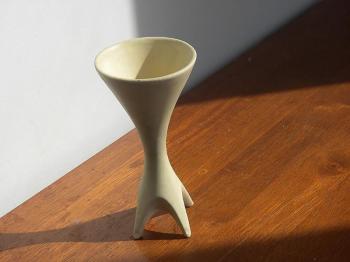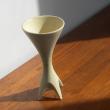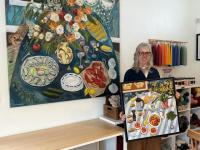Researcher sought to write untold history for a $5K fellowship competition
There is no Wikipedia page for Andersen Design, established in 1952 as production as an art form on the Boothbay peninsula in Maine. Coming across the Wikipedia page on Mid-century design under the heading, industrial design, I saw my parent's personal friends and colleagues, stores that sold Andersen, and other ceramic companies of the era.
After many years of waiting for someone else to write about Andersen, I edited the industrial design section of Wikipedia Mid-century Design to include Andersen Design, established in 1952. My edit was removed by the admin and I was told I needed a reference from a peer-review journal. I submitted the write-up about Andersen in the book, “The Collector’s Eye Decorating with the Objects you Love,” by Christine Churchill, published by Harper Collins.
I received no further response from Wikipedia, although every other designer mentioned in Christine Churchill’s book is more widely known than Weston and Brenda Andersen, the Andersens are the main features in that section of the book, dominating both images and text.
Murano Glass Studio Pottery (excerpt): “If you’d like to know the next big thing in collecting 20th century design, you might want to ask Sara Blumberg and James Oliveira ... Italian glass is one of the fields that now consumes them, particularly the stunning shapes that have been produced for hundreds of years on the fabled isle of Murano in the Venetian Lagoon. They’ve also been buying American studio pottery from the 1950s and the 1960s ,especially the simple bowls and vases made by Weston and Brenda Andersen in East Boothbay, Maine. Not to mention 20th century Scandinavian pottery. What do these disparate fields have in common? Looking at the pottery shapes on display, you can see that the crosscurrents of design have flowed from Europe to America and back. But Sara has a more elemental reason: it all comes down to form. In relating why they love one group of Andersen pieces, she calls them “organic” and the same would be said about their favorite objects-not to mention the way they have decorated their home.
“Responsible for changes good and bad in architecture and design, the Industrial Revolution changed the manufacturing process of pottery for good. New factories spat out thousands of pieces of pottery per day — their goal to stock kitchens and dining rooms of middle-class Europe and America quickly and inexpensively. The Scandinavians were the first to rebel. They began to address the need for “good design for every day use” around 1916. For Swedish artist and alchemist Wilhem Kage, that meant inventing hundreds of new glazes. The Americans were quick to follow suit, benefiting from the influx of European designers during the 1930s and 1940s. The Scheiers were a husband-wife team famous for creating slightly off-center pieces. Also thumbing their noses at machine-made perfection were Weston and Brenda Andersen (many of their pieces are seen in this spread).”
The above is a piece of written history about Andersen Design, but Wikipedia, a more widespread source of information, refuses to include Andersen Design in a history of Mid-Century Industrial design unless we have a write-up in a peer review journal.
Winning this $5,000 Fellowship would produce in a published story. A research project that brings to life the history of Andersen Design with its historical roots connecting it to earlier arts and crafts movements reacting to the Industrial Revolution has a strong chance of winning the fellowship because Andersen Design has a strongly established recognition in the crafts field.
Andersen Design was sold in small shops, museum stores, department stores, and catalogs across America as well as in department stores in Japan and Denmark. Today many of the players who can tell the history are alive but aging. All across America, there might still be special and unique stores that sold Andersen as well as the collectors who passed the collections down from one generation to the next. Why did this happen? What did it mean? This is a unique story that needs to be told, particularly in these changing times.
The Craft Archive Fellowship - This fellowship will foster archival research on underrepresented and non-dominate craft histories in the United States, such as feminist, intersectional, queer, Black, Indigenous, Latinx, Asian American and Pacific Islander, and other communities and approaches. Six fellows will be awarded $5,000 to support archival research on underrepresented and non-dominant craft histories in the United States.
Andersen Design is underrepresented in craft history because of a series of unique choices that were made. Weston and Brenda Andersen were a part of the core urban Midcentury designers where Weston learned slip-casting from Eva Zeisel while studying industrial design at Pratt Institute, but Weston and Brenda took a unique course, not only did they design for industry but they reinvented industry using production as an art form well in advance of Andy Warhol popularizing the concept by targeting a celebrity clientele. The Andersens targeted the middle class because that was the class they preferred, while Andersen work was also collected by the well-to-do.
The second unusual choice was in choosing to use non-traditional productive techniques, and thirdly in creating a niche market of their own making rather than pursuing mass market visibility.
To tell this story of a production as an art form as a business in a home creating its own niche market outside the mainstream is a relevant story to be told in today's changing world. If you would like to apply for this fellowship, we are available as a resource. Why did Andersen Design happen and how did it happen? That is an interesting story to tell.
To apply for the Craft Archive Fellowship, go to www.centerforcraft.org/grants-and-fellowships/craft-archive-fellowship
























